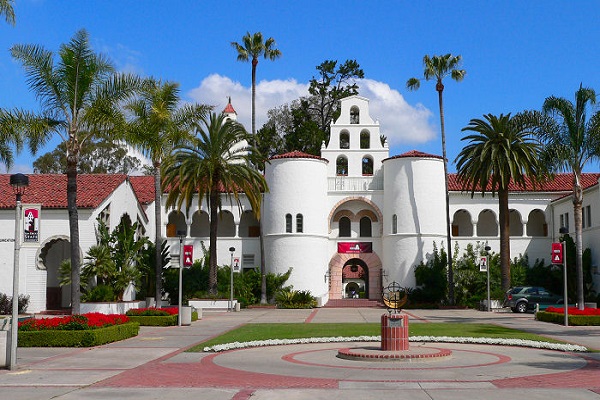San Diego State University: Snapdragon Stadium Menu Calls Out to Aztecs
The month-old home for Aztec football has some 700-year-old Aztec touches to it.
They come in the form of special culinary offerings at San Diego State University’s Snapdragon Stadium. Spectators at home football games can enjoy three menu items reflecting the cuisine of the Mesoamerican culture, including pre-contact Mexico: a vegan tamal, toasted grasshoppers and a chocolate truffle infused with chili pepper.
Menú Azteca continues and expands the athletics component of SDSU’s education program in Aztec culture and a commitment to portray it in a dignified manner, said anthropologist Ramona Pérez, chair of the Aztec Identity Initiative.
“Everything we do has to be about this respect and honoring of our identity,” Pérez said. “We’ve got our sports teams playing there, who are the Aztecs, so the food should reflect the Aztecs.”
Chefs Jose Mendoza and Enrique Hernandez began developing the menu items at the beginning of the year for their introduction at the stadium’s first game on Sept. 3. They were hired by Aztec Shops, the SDSU auxiliary in charge of food and beverage concessions at the facility in SDSU Mission Valley.
The tamal Azteca is “Aztec Authentic,” Pérez said, a vegan tamale (including the mole sauce) using only ingredients available to the Aztec people prior to European contact. That means no dairy, sugar, pork, beef or chicken, with the sweetness derived from honey. They’re sold at four Ultra Classics concession locations inside Snapdragon Stadium, as well as the luxury suites.
The stadium is using a local vendor for the masa that goes into the tamale, said executive sous chef Hernandez, who formerly worked at the San Diego Padres’ Petco Park and credits Mendoza with collaborating with Pérez to get the menu item just right. It is served with a Mexican cactus salad for additional authenticity.
Inspired
The other two menu items are identified as “Aztec-inspired,” honoring the culture but with a more modern approach to specific ingredients.
Chapulines Azteca are toasted grasshoppers from Oaxaca, mixed with roasted peanuts and sold at the Ultra Classics stands as a “grab and go” item that Hernandez compares to a trail mix. Hernandez said the insects arrive in San Diego already dry-roasted and with the heads removed; they’re then re-roasted at the stadium kitchen and given “a little more of a different flavor,” he said.
Chapulines are a common part of the Oaxaca diet today, said Hernandez, who learned his skills at Le Cordon Bleu (formerly the California Culinary Academy) in San Francisco. “If somebody blindfolded you, you wouldn’t know what it was,” he added. It’s “just kind of nutty and toasty.”
The third item, Chocolatl Azteca, is similarly Aztec-inspired, speaking to the spicy chocolate and chili drink the Aztecs were known to offer to guests.
Pérez — who is a food anthropologist with 25 years of work in Oaxaca — said creating the menu was more difficult than it may look given the centuries that have passed since the time it seeks to emulate.
“The hardest part is how do you make this palatable,” she said. “We have an entirely different palate than our Indigenous ancestors.”
Additional Menú Azteca items could be coming later, Pérez said. All proposals go through the Aztec Culture and Education Committee for approval, “to make sure that we are respecting and honoring who it is that we’re referencing.”

